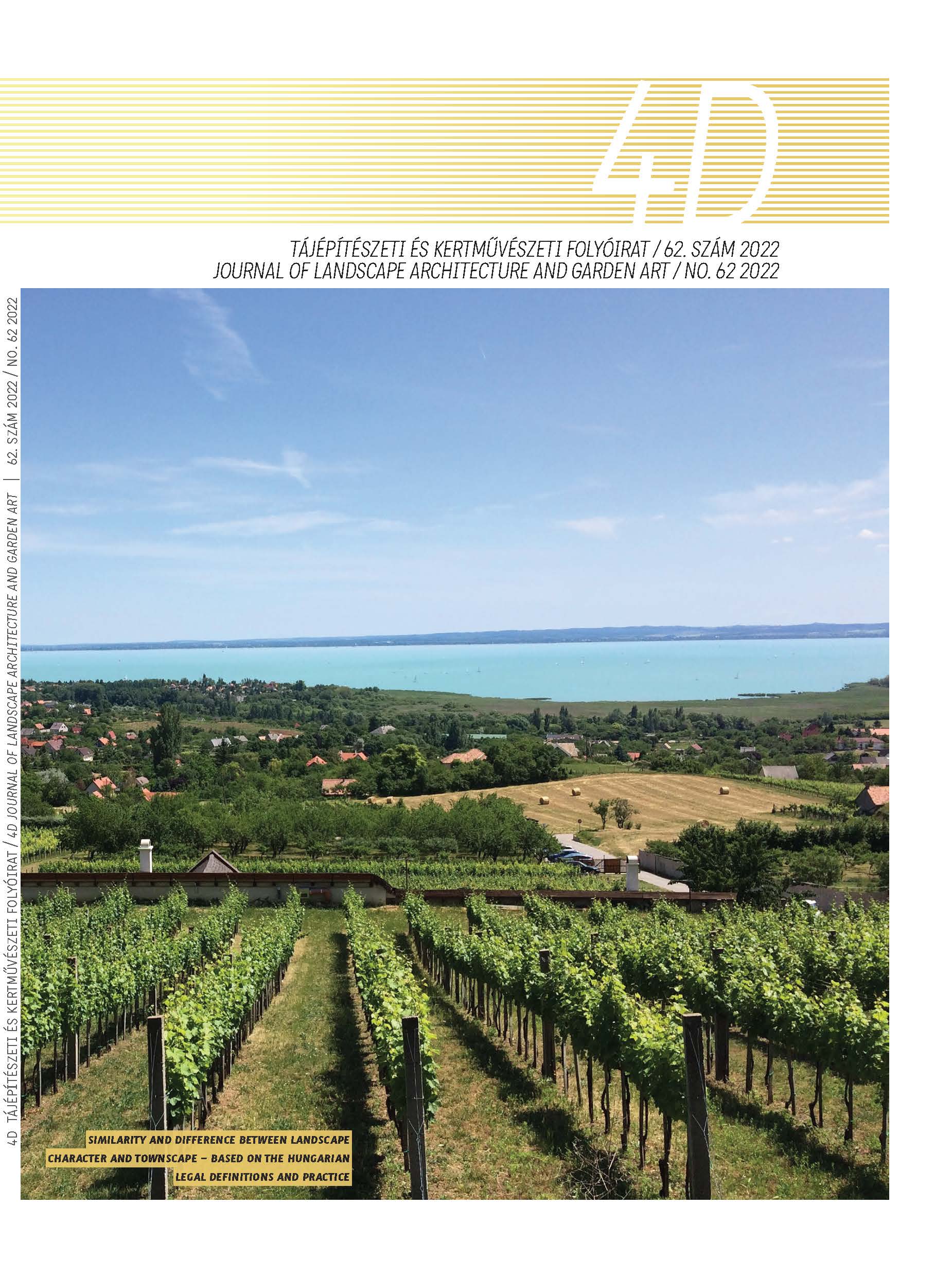Local Climate Zones Map of Budapest
DOI:
https://doi.org/10.36249/62.3Keywords:
climatezones, Budapest, GIS, urban climate, Urban Heat Island (UHI)Abstract
The GIS-based mapping of local climate zones in Budapest is a particularly actual task for the improvement and preservation of the city's climatic conditions. An important basis for urban climate research is the identification of local climate zones within the city, the foundations of which were laid by Stewart and Oke. Local climate zones include areas ranging from a few hundred meters to a few kilometres in diameter, with relatively uniform land cover, material types and structure. The extent of the Urban Heat Island (UHI) phenomenon is essentially closely related to land cover and building density. The energy storage capacity of paved –and other artificial surfaces (e.g. roads, buildings, etc.) is generally higher than that of unpaved, natural surfaces (green or water surfaces) so they store more heat from the Sun and then compensate for the heat surplus by heating their surroundings in the evening. Consequently, densely built-up areas with a high impervious surface ratio increase the urban heat island effect, while unbuilt areas have a balancing effect on the climatic conditions of a city. In her article "The growing role of planning in preparing for climate change" published in the journal 4D, Kinga M. Szilágyi mentions the importance of mitigating the urban heat island effect, thus reducing the adverse effects in both urban and rural landscapes. According to the author, research and feedback show that the quality and liveability of Hungarian cities and urban and rural landscapes in general are gradually declining. A series of conferences were held in April 2012 to highlight the problems and to propose solutions.
The phenomenon of the urban heat island and its dependence on the settlement's built-up areas was investigated by András Béla Oláh, who collected methods for urban planning, which can help to predict the temperature and air circulation conditions of a planning area or region in the planning phase. According to Oláh, the urban heat island phenomenon and the urban air circulation have a fundamental impact on differences in temperature within settlements. The two are closely related, the latter being influenced by the ratio of built-up area and other characteristics of the settlement. If buildings are too close together, there is no ventilation at street level, therefore no air circulation evolves. This phenomenon mainly affects districts 5, 6 and 7 in Budapest.
Research on the urban heat island effect at the University of Szeged has shown that the difference in the average annual air temperature between the outer and the inner city of Szeged is greater than 2.5 Kelvin (winter semester > 2.1; summer semester 3.18). This is often 5-6 Kelvin in an individual measurement, which in extreme cases can be up to 8 Kelvin in the morning in summer, according to data from measuring stations in the suburbs and in the city centre, which are only 4 km apart (Szeged city center, Szeged suburbs 21-23 August 2011).
In the case of Budapest, the structure of the settlement, the extent of areas with similar land cover and built-up areas, and their relative location enrich the picture. The resulting differences between the different neighbourhoods have different effects on the characteristics of the urban heat island effect and the urban climate, which need to be mapped in order to provide appropriate responses from a climate adaptation perspective.
The aim of the present analysis is to identify the local climate zones within the city of Budapest and, on this basis, to identify the pressure and compensation areas that determine the urban climate, both in terms of their characteristics and their location.
References
Bechtel, B. – Alexander, P. – Böhner, J. – Ching, J. – Conrad, O. – Feddema, J. – Mills, G. – See, L. – Stewart, I. (2015): Mapping Local Climate Zones for a Worldwide Database of the Form and Function of Cities. ISPRS International Journal of Geo-Information. (4) 199–219. DOI: https://doi.org/10.3390/ijgi4010199
Chapman, S. – Thatcher, M. – Salazar, A. – Watson, J. – McAlpine, C. (2018): The Effect of Urban Density and Vegetation Cover on the Heat Island of a Subtropical City. Journal of Applied Meteorology and Climatology 57 (11) 2531-2550. DOI: https://doi.org/10.1175/JAMC-D-17-0316.1
Gal, T. – Bechtel, B. – Foley, M.: WUDAPT. [online] In: World Urban Database and Access Portal Tools. URL: https://geopedia.world/#T4_L107_x2205074.5012278357 [2021. június 22.]
M. Szilágyi Kinga (2012): A tervezés növekvő szerepe a klímaváltozásra való felkészülésben. 4D, (26), 2-3.
Oláh András Béla (2008): A városi hősziget és légkörzés alakulása a beépítés függvényében. 4D, (9) 26-33.
STEWART, I. – OKE, T.R. (2009): Newly developed “thermal climate zones” for defining and measuring urban heat island magnitude in the canopy layer. Bulletin American Meteorological Society (90), 922-23.
Stewart, I. D. – Oke, T. R. (2012): Local Climate Zones for urban temperature studies. Bulletin of the American Meteorological Society. 93 (12), 1879–1900. DOI: https://doi.org/10.1175/BAMS-D-11-00019.1
Unger János (2010): A városi hősziget-jelenség néhány aspektusa. [PhD értekezés]. MTA Doktori Értekezés, Szeged.
Downloads
Published
Issue
Section
License
Copyright (c) 2022 Szczuka Levente, Bátrhoryné Nagy Ildikó Réka, Lőrinczi Regina

This work is licensed under a Creative Commons Attribution-NonCommercial-NoDerivatives 4.0 International License.
A folyóirat Open Access (Gold). Cikkeire a Creative Commons 4.0 standard licenc alábbi típusa vonatkozik: CC-BY-NC-ND-4.0. Ennek értelmében a mű szabadon másolható, terjeszthető, bemutatható és előadható, azonban nem használható fel kereskedelmi célokra (NC), továbbá nem módosítható és nem készíthető belőle átdolgozás, származékos mű (ND). A licenc alapján a szerző vagy a jogosult által meghatározott módon fel kell tüntetni a szerző nevét és a szerzői mű címét (BY).



